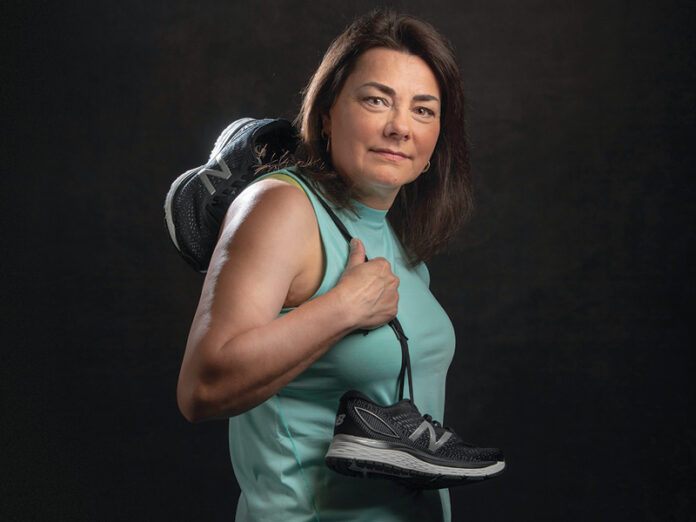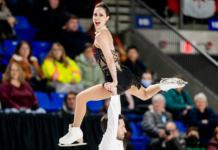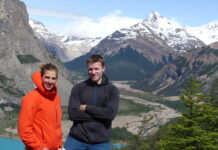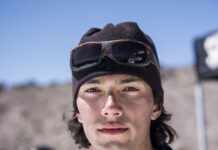
It hasn’t been an easy journey for marathon runner Rose Kamma-Morrison of Nanaimo, B.C. Born with hearing loss, she has faced adversity right from the start. And life did not get any easier. At 16 she was diagnosed with Retinitis Pigmentosa and Ushers Syndrome Type 2, which both cause vision loss. But instead of giving up, Rose chose to find ways to help both herself and others.
In 2009, she became an advocate for blind runners through an organization she created called Running for Change. Through her efforts, race organizers across Canada have implemented safety measures to help vision-impaired runners compete and participate. She says today the website is still up but her work has largely been completed with most races taking on her recommendations.
At age 30, Kamma-Morrison’s vision began to steadily worsen. Shortly after turning 40, she hit rock bottom. Her mother died, her vision deteriorated even further, she gained a lot of weight and battled severe bouts of depression.
Fed up with the constant misery, she decided to do something about it and joined a local running club to improve her well-being. Running helped her lose weight, and interacting with other club members reduced her depression. But her improved well-being was short lived.
Kamma-Morrison initially tried to keep her vision problem a secret, but during a training run, she fell into a ravine. After her fall, she told club members about her poor eyesight, but some of them accused her of lying because she seemed too capable. Those who believed her, shunned her.
“They didn’t know how to deal with my disability, so they ignored me,” said Kamma-Morrison.
Leaving the club was never an option because maintaining her physical and mental health outweighed the snubs and silent treatment.
Over time, she connected with a few club members, including former club president Chris Morrison who volunteered to be her guide when she qualified for the 2009 Boston Marathon.
“I had worked with blind and visually impaired people in England, so I knew that they were quite capable,” said Morrison, now 70.
The 2009 Boston Marathon was the first time Morrison served as a guide runner, a fully sighted runner who runs beside the visually-impaired runner holding a tether.
After a successful finish at Boston, they decided to run other marathons together. Today, they have completed a total of 13 marathons and become a married couple.
“We had rapport!” Morrison laughs.
The Boston Marathon introduced Kamma-Morrison to some of the safety measures being used to protect visually-impaired runners. It was a positive experience for her and she decided that marathons in Canada should do the same.
Kamma-Morrison explained that quite often, visually-impaired runners would get tripped up or bump into other runners at the start of races because they could not see who was near them. At Boston, this problem was eliminated because they were allowed to start before the rest of the pack. In addition, they wore bibs that said ‘Blind/Visually Impaired Runner,’ and their guides wore bibs identifying them as guides. Guide runners entered for free.
When Kamma-Morrison approached marathon directors in Canada about making these adaptations, they enthusiastically cooperated. Quite often, she’d hear them say, ‘I wish we had thought of it.’
That’s when Kamma-Morrison decided to set up Running for Change to advocate for the rights of visually impaired runners. At the same time, Morrison established a Facebook page called ‘Running Eyes’ to match visually-impaired runners with guides so they could enter races.
“I saw from a sighted person’s point of view there were no provisions to get guides and the blind athletes matched up together,” said Morrison, “so I began the Running Eyes page.”
Morrison initially got nine guides to run the 2009 Victoria Marathon with the visually impaired athletes.
“We now have over 1,300 people on the page,” said Morrison. “Members consist of blind and guide runners.”
According to Morrison, members live in Canada, the U.S., New Zealand, Australia, India and parts of Africa and Europe.
Kamma-Morrison has no plans to retire from running although her husband no longer runs due to health issues. Asked what she can see today, the 54-year-old Kamma-Morrison said, “Imagine looking through a straw. … I always grieve each time I lose vision. I grieve as if I lost a loved one.”
Lead image by Craig Letourneau















